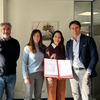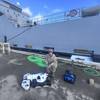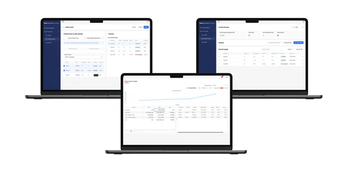Widening Scope of Waterway Study
"The Corps should be commended for expanding the scope of its study, but changes are still needed to make the study fully credible," said John J. Boland, chair of the committee that wrote the report, and professor emeritus, department of geography and environmental engineering, Johns Hopkins University, Baltimore.
For the past few years, the Corps has been working on what is known as the Restructured Upper Mississippi River-Illinois Waterway Feasibility Study, the heart of which is a multibillion-dollar proposal to double the length of up to a dozen locks on the river. The Research Council first reviewed the feasibility study in 2001 during controversies over the accuracy of models being used by the Corps to justify lock expansion based on increased demand for barge transportation. More than 100 million tons of cargo -- half of it grain destined for international markets, the other half goods such as construction materials, coal, and chemicals -- are shipped along the navigation system each year. The locks, which along with dams allow barges to traverse uneven river depths, were originally designed for "tows" of barges up to 600 feet long, but the length of a typical tow has increased, forcing the Corps to look for ways to relieve congestion.
Although the committee applauded the Corps for adding hundreds of possible ecological restoration projects in the study, it said the projects need to be better integrated with commercial navigation proposals so that trade-offs between them can be considered. The Corps also should strengthen the science behind the ecological proposals and incorporate adaptive management principles, which call for decisions to be based on scientific monitoring and experimentation. In particular, the Corps should make full use of the Environmental Management Program, an existing federal-state partnership that gathers data and conducts ecological research on the Upper Mississippi.
The committee noted that the Corps often appears to believe that it must give priority to navigation concerns over environmental ones because it considers the 1930 Rivers and Harbors Act -- which ordered a 9-foot channel to be maintained in the Upper Mississippi -- its overriding authority for managing river projects. Because of ambiguities among the 1930 authorization and later laws, the Corps has sought authority from Congress to broaden the types of projects it can plan and implement on the river. The committee agreed with this request, saying the Corps should specifically seek permission to concurrently address flood management, navigation, and ecosystem restoration issues on the Upper Mississippi and Illinois system. Because 50 percent of the barges on the waterway are hauling grain, forecasts of increased grain exports would strengthen the case for extending the locks, while stable or declining levels of exports imply that extensions may not be economically justified. In the latest version of the feasibility study, forecasts of future U.S. grain exports were produced for the Corps by Sparks Companies Inc., Memphis, Tenn. Consistent with recommendations in the 2001 Research Council report, a set of five scenarios, instead of a single forecast, was provided by Sparks. Four of the scenarios predict increasing levels of U.S. grain exports over time, while only one predicts a slight decline. However, the committee said there are no overwhelming regional or global trends that clearly portend a departure from relatively steady levels of U.S. grain exports over the last 20 years. Absent major changes in international income levels, consumer preferences, or grain production, all of which can affect demand for American grain, the committee said future U.S. grain exports are likely to remain flat, at least in the near term. With half of the barges carrying nongrain commodities, the committee said that more scenarios for future levels of these shipments need to be developed as well.
The economic feasibility of the project also depends on whether the benefits for shippers from navigation improvements outweigh the cost of those improvements. However, the committee found that the "Tow Cost" model that has been used to estimate the project's benefits has limited relevance and value within the feasibility study.
The "ESSENCE" model, developed by the Corps to overcome shortcomings in the Tow Cost model, also is inadequate. Because of this, no credible estimate of the benefits to shippers has been established, the committee concluded. The committee urged the Corps to give greater consideration to less expensive ways of speeding up barge traffic. For example, permits could be issued to travel through locks at specified times, and those permits could be traded among towboat captains.
Although such nonstructural alternatives have been recommended by the Research Council and others in the past, they have not been adequately considered by the Corps in connection with its feasibility study, according to the committee. More efficient nonstructural ways to manage barge traffic are needed regardless of whether lock extensions are constructed someday. Moreover, the failure to consider nonstructural alternatives undermines the feasibility study's proposed structural improvements because it is not clear how the benefits of lock extensions can be estimated reliably without first managing waterway traffic more efficiently within the existing system. The Research Council study was sponsored by the U.S. Army Corps of Engineers. The National Research Council is the principal operating arm of the National Academy of Sciences and the National Academy of Engineering. It is a private, nonprofit institution that provides science and technology advice under a congressional charter. A committee roster follows.
Copies of Review of the U.S. Army Corps of Engineers Restructured Upper Mississippi River-Illinois Waterway Feasibility Study are available from the National Academies Press; tel. 202-334-3313 or 1-800-624-6242 or on the Internet at http://www.nap.edu. Reporters may obtain a pre-publication copy from the Office of News and Public Information (contacts listed above).











